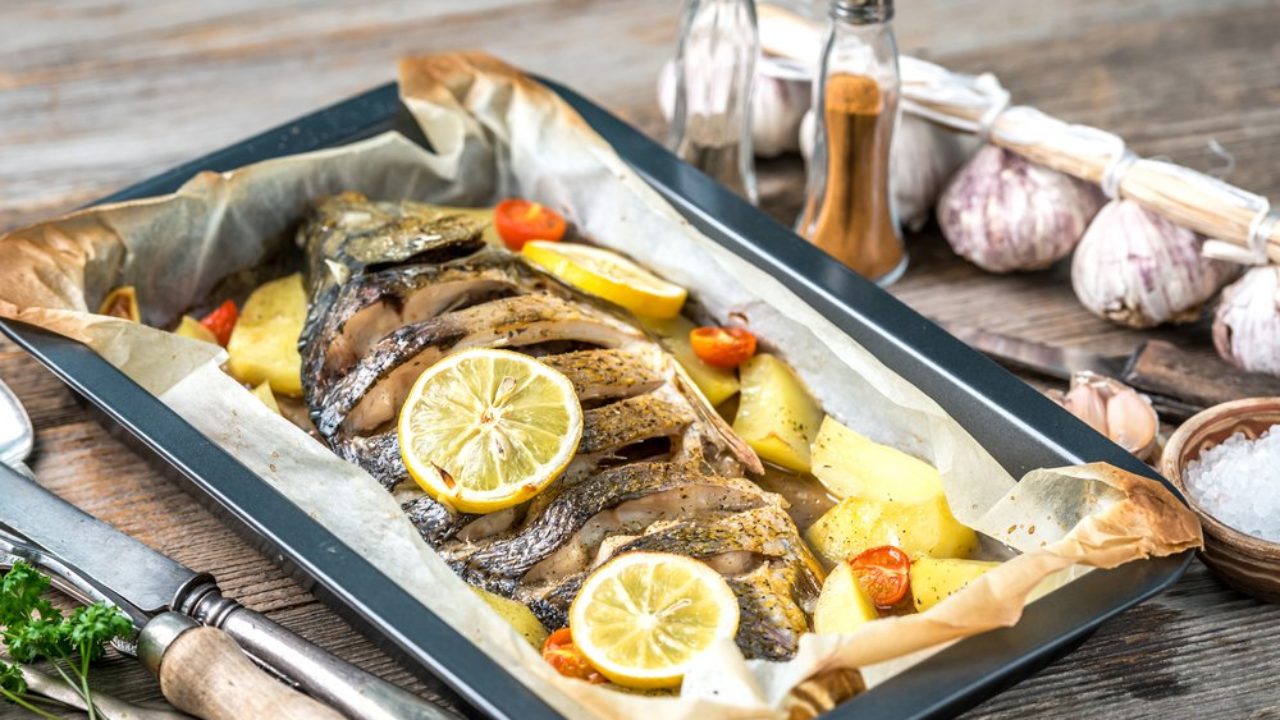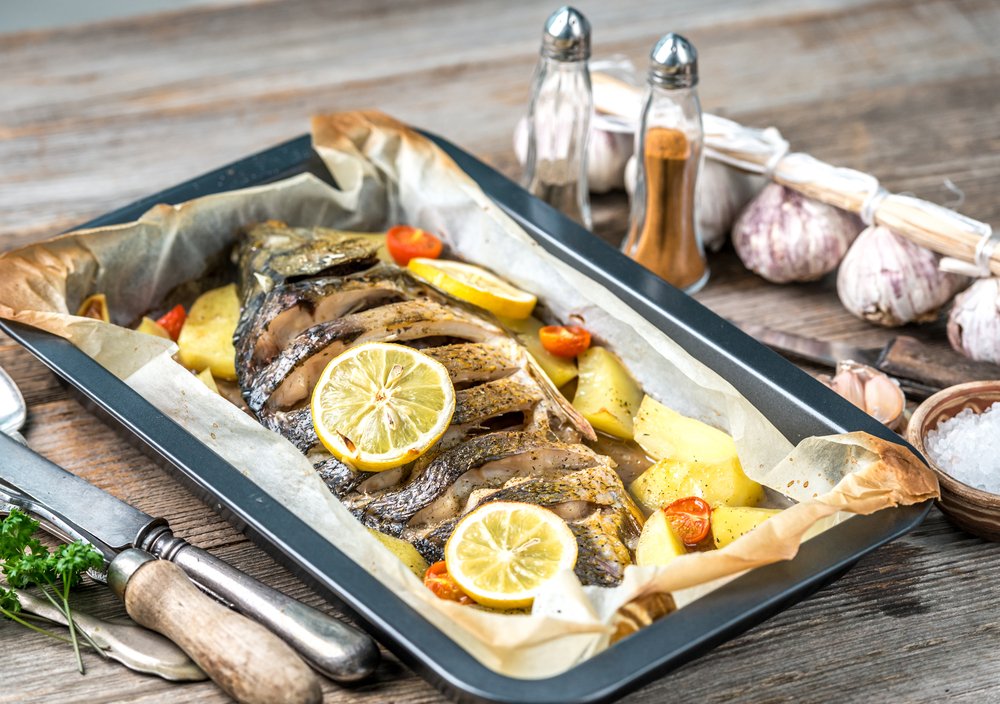How to Cook Fish in Aluminum Foil: A Complete Guide
Written By James Morgan
There is a multitude of delicious and health-conscious ways to prepare fish, but one standout method is learning how to cook fish in aluminum foil. This technique not only locks in the natural flavors and moisture but also makes for an incredibly simple and effortless cooking process. In this guide, we'll explore all you need to know about this fuss-free cooking method, delve into the viral recipes, and offer you some pro tips to master the art of foil-cooked fish.

Why Choose Aluminum Foil?
When it comes to grilling or oven-baking fish, using aluminum foil has numerous advantages. Firstly, aluminum foil is an excellent heat conductor, ensuring an even cook throughout your fish. Second, it offers a convenient solution for cooking delicate fish fillets that can easily break apart on the grill or in the pan. Finally, cooking in aluminum foil reduces cleanup time, as it prevents the fish from sticking to your cookware.

The Ingredients for Perfect Foil-Cooked Fish
Before diving into the process, let's gather everything you'll need. Here is an inclusive list of ingredients and necessary cookware to get started:
Ingredients:
- Fish fillets (salmon, tilapia, trout, etc.)
- Fresh vegetables (asparagus, bell peppers, zucchini, etc.)
- Olive oil or melted butter
- Lemon slices
- Fresh herbs (dill, parsley, thyme)
- Salt and pepper
- Minced garlic
Cookware:

Setting Up Your Cooking Space
Preparing an ideal cooking space is paramount to ensuring a smooth and delightful cooking experience. Start with a clean countertop, ample lighting, and easy access to all your ingredients and cookware. If you're planning to grill the fish, preheat your grill to medium-high heat and ensure the griddle is well oiled. If baking, preheat your oven to 375F (190C).
:max_bytes(150000):strip_icc()/gettyimages-98471689-2000-59405d1875aa4414ac887a10dfb4c0d1.jpg)
Step-by-Step Guide to Cooking Fish in Aluminum Foil
Step 1: Prepping the Fish
Start by rinsing your fish fillets under cold water and patting them dry with a paper towel. If your fillets have skin, you may wish to remove it, depending on your preference. Using a sharp knife, season your fish with salt, pepper, and any other desired spices. Rub the seasoning thoroughly into the fillets, ensuring even coverage.
Step 2: Preparing the Vegetables and Herbs
Next, wash and cut your vegetables into thin strips or bite-sized pieces. The beauty of cooking fish in foil is that you can choose a variety of veggies to complement your fish. Think of colorful bell peppers, crisp asparagus, or tender zucchini. Arrange the vegetables on a cutting board, and keep them aside.
Step 3: Assembling the Aluminum Foil Packets
Tear off a large piece of aluminum foil for each filletlarge enough to wrap around the fish and vegetables with room to spare, creating a pouch. Place a fish fillet in the center of each foil piece. Layer your choice of vegetables on top and around the fish. Drizzle olive oil or melted butter over the fish and veggies, and add a few slices of lemon for a zesty kick. Finally, sprinkle minced garlic and fresh herbs over the top. Seal the foil packet by folding the edges together to create a tight seal, ensuring there are no leaks.
Step 4: Cooking the Fish
If you are grilling, place the foil packets on the preheated griddle. Cook for 15-20 minutes or until the fish is fully cooked and flakes easily with a fork. If baking, place the foil packets on a baking sheet and cook in the preheated oven for the same duration. Remember, cooking time may vary depending on the thickness and type of fish fillets you are using.
Tips and Variations for Foil-Cooked Fish
Flavorful Marinades
Experimenting with different marinades can elevate your foil-cooked fish to new heights. Consider making a citrus marinade with lemon juice, orange juice, and a hint of white wine. For an Asian-inspired twist, mix soy sauce, ginger, garlic, and a splash of sesame oil. Allow your fish to marinate for at least 30 minutes to absorb the vibrant flavors.
Mix and Match Your Vegetables
Creating a delightful foil-cooked fish meal isn't limited to just one or two types of vegetables. Feel free to mix and match different veggies to create a colorful and nutritious dish. Carrots, snap peas, cherry tomatoes, and even baby potatoes can add a delightful twist to your meal. Remember to cut harder vegetables into smaller pieces to ensure they cook evenly alongside the fish.
Adding Grains
To transform your foil-cooked fish into a complete meal, consider adding grains like quinoa, rice, or couscous to the foil packets. Pre-cook the grains partially before adding them to ensure they cook fully during the baking or grilling process. Layer the grains at the bottom of the packet, place the fish on top, and follow with the vegetables and seasonings.
Using Compound Butter
Another way to enhance the flavors of your foil-cooked fish is by using compound butter. Create compound butter by blending softened butter with herbs, garlic, lemon zest, or any other desired seasoning. Place a dollop of compound butter on top of each fish fillet before sealing the foil packets. As the fish cooks, the butter will melt, infusing the fish and vegetables with rich and delectable flavors.
The Benefits of Cooking Fish in Aluminum Foil
Healthier Cooking
One of the most significant advantages of cooking fish in aluminum foil is that it promotes healthier cooking. Because the fish is essentially steamed in its own juices, you can achieve a flavorful meal with minimal added fats. Additionally, the nutrients in the fish and vegetables are preserved because the foil traps the moisture and confines the cooking liquids within the packet.
Perfect for Meal Prep
Cooking fish in aluminum foil is an excellent method for meal prep or batch cooking. You can prepare several foil packets in one go and store them in the refrigerator until you're ready to cook. This way, you can enjoy fresh, flavorful fish without the hassle of daily preparation. The convenience of foil packets makes them perfect for busy weeknight dinners or outdoor grilling parties.
Reduced Cleanup
One of the standout features of foil-cooked fish is the drastically reduced cleanup time. Since the fish and vegetables are contained within the foil packets, there's no need to scrub pans or baking sheets. Simply toss the used foil packet away, and you're left with a clean and tidy cooking space. This makes foil-cooked fish an ideal choice for camping trips or outdoor grills where washing dishes can be a challenge.
Serving and Enjoying Your Foil-Cooked Fish
Once your fish is fully cooked, carefully open the foil packets, being mindful of the hot steam that will escape. Transfer the savory fish and vegetables to a serving plate, and garnish with additional fresh herbs if desired. Pair your foil-cooked fish with a side salad, crusty bread, or a glass of white wine for a well-rounded and appetizing meal.
Cleaning and Maintaining Your Cookware
After enjoying your delightful meal, ensure your griddle, knife, and cutting board are well-cleaned and maintained. Using an appropriate cleaner, such as Cookware Cleaner and Cutting Board Oil, will keep your tools in good condition and prolong their lifespan.
As an Amazon Associate, I earn from qualifying purchases.
For more inspiration and recipes, check out these articles: Cook Rice, Cook Casserole, Cook White Rice, Cook Quinoa, and Cook Salmon.



